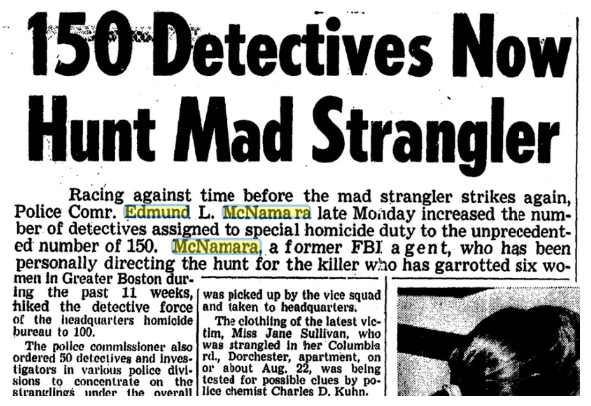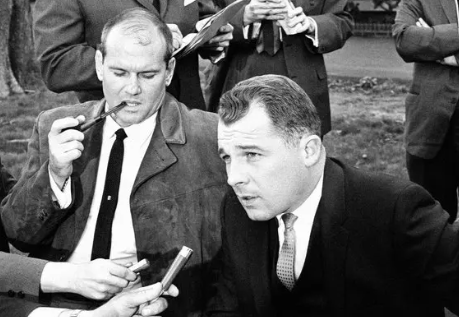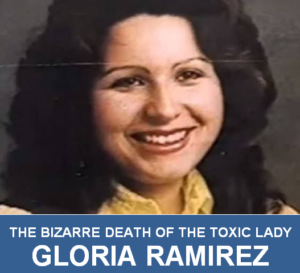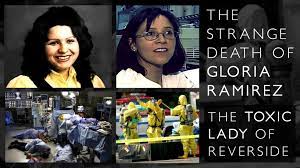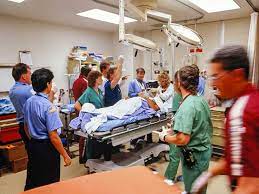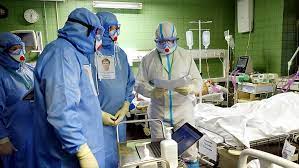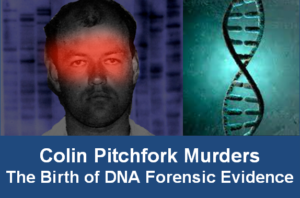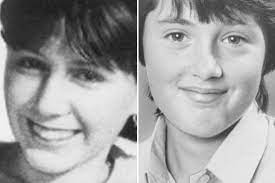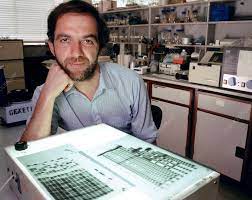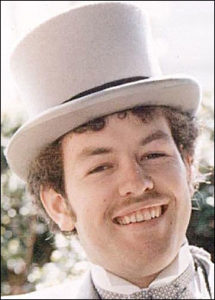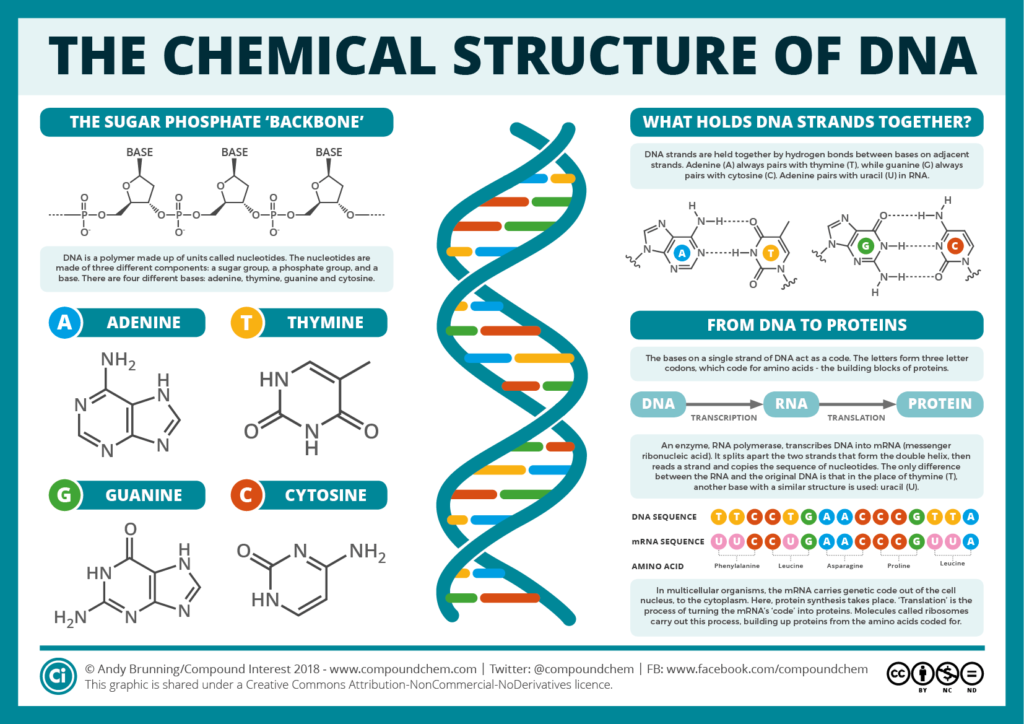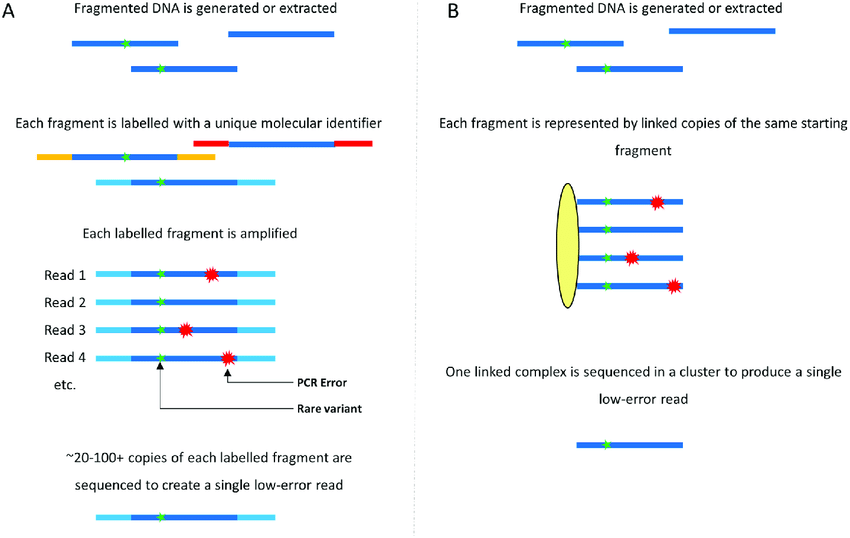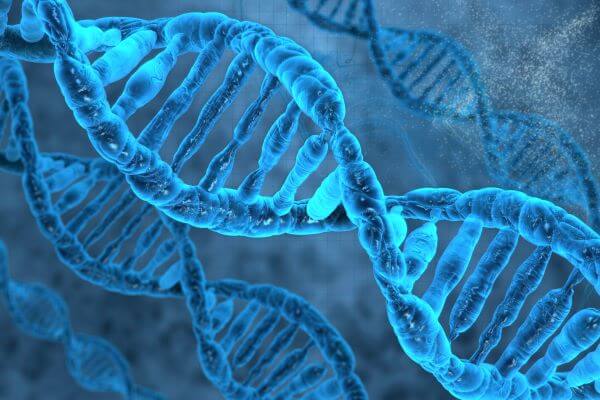 The Boston Strangler was America’s first modern serial killer case. From June 1962 until January 1964, someone terrorized the Greater Boston area of Massachusetts with thirteen sexually motivated murders. Single women of all ages were raped, sadistically brutalized, and strangled to death inside their apartments. Apparently, they voluntarily let their killer in.
The Boston Strangler was America’s first modern serial killer case. From June 1962 until January 1964, someone terrorized the Greater Boston area of Massachusetts with thirteen sexually motivated murders. Single women of all ages were raped, sadistically brutalized, and strangled to death inside their apartments. Apparently, they voluntarily let their killer in.
The slaying string suddenly stopped. No one was apprehended, charged, or convicted. For years, the Boston Strangler serial murders remained unsolved. The files—whatever was left of them—sat shelved with other cold cases. Day-by-day, the trail got icier. That’s until modern forensic science revisited the evidence using cutting-edge, DNA genotyping.
Authorities long debated whether Albert DeSalvo was the Boston Strangler. He was a serial sexual predator and certainly capable of strangling women while raping them. In fact, Albert DeSalvo admitted being the Strangler and claimed responsibility for the thirteen cases, plus other homicides. But, DeSalvo also recanted his confession, blamed others and many pieces implicating him didn’t fit.
Boston area detectives didn’t have Albert DeSalvo on their radar during the early investigation. It wasn’t until late 1965 that DeSalvo surfaced after making a jail-house confession to a cellmate who happened to be represented by high-profile lawyer F. Lee Bailey. Bailey took on DeSalvo’s case and tried to broker a deal with Boston Police and the D.A. It was having Albert DeSalvo ruled criminally insane so he could move from the harsh penitentiary to a comfortable hospital.
The police were very cautious about credibility in DeSalvo’s confession. There was absolutely no physical evidence—at the time—to connect Albert DeSalvo to any of the Strangler scenes. DeSalvo was well known for exaggerating and fabricating stories. Further, DeSalvo seemed wrong about some Strangler scene key facts such as times, mechanisms of death and various evidence points. It seemed to investigators that DeSalvo could have got his information from the news, made some up, or possibly heard it in jail from the real killer.
Albert DeSalvo was written off as a braggart and a pathological attention seeker. He was never charged for the Boston Strangler murders and died in prison in 1973 after being shanked by fellow inmates. The Strangler case sat dormant until 2013 when the Boston PD got special cold case funding from the National Justice Institute. With it, they assembled a team and applied DNA analysis from questioned male biological evidence retrieved at one Strangler death scene and compared it with known DNA extracted from DeSalvo’s exhumed body. The results finally settled the question, “The Boston Strangler—Was it really Albert DeSalvo?”
Boston Strangler Case History
The killings associated with the Boston Strangler serial murder case happened over a 19-month period from the summer of 1962 until the winter of 1964. All victims were females alone in apartments who were killed by manual or ligature strangulation. Some were also stabbed. All were sexually violated in some manner, and most had their nylon stockings cinched around their necks. However, there were marked differences in modus operandi (MO) between the killings. There was also a huge age range. The youngest Strangler-attributed victim was 19. The oldest was 85. Initially, the Strangler case was called the “Silk Stocking Murders”. This label changed when the Boston Sunday Herald ran the July 8, 1962, headline “Mad Strangler Kills Four Women in Boston” after the fourth victim was found. Then, a panic surge swept Boston causing women to arm themselves, buy guard dogs, and rig alarms in their homes.
The print, radio, and TV media industry didn’t help calm peoples’ fears. They sensationalized the Boston Strangler case as Boston’s crime of the century. Interest intensified as the Strangler’s body count grew. Through good investigative journalism and helpful leaks from police officers, much of the Strangler key-fact evidence got published.
Normally, this critical information—only known to the true killer and the principal investigators—would be held back in strictest confidence. Not so with many of the individual Strangler murders. Descriptions of exact ligatures, body posings in lurid sexual positions, and notes allegedly left by the killer appeared in newspapers and on the air.
Another challenge was the multi-jurisdictional overlap in the Greater Boston police departments. Strangler victims surfaced in Cambridge, Salem, Lynn, and Lawrence as well as central Boston. This was the sixties and way before modern communication links in law enforcement. The media had better information channels than the cops and were making case links that seasoned detectives doubted.
The sixties weren’t sophisticated times as forensics and informatics go. But the Boston detectives were no strangers to murders and were well-equipped with gut sense. The wide gap in victim ages, race, social class, crime scene modus operandi and event spacing puzzled the initial investigators. There were so many different patterns that it was hard to believe that, behaviorally, the crimes were committed by one person.
Many officers still believe that today. They feel that more than one killer was at work in the Boston area during that period and to seasoned officers, that makes sense. However, there was one obvious common denominator in all thirteen murders. Not a single scene had any sign of forced entry. Somehow, the killer had to have been let in.
The Boston Strangler Victims
Initially, the Boston Strangler victim list held fifteen names. After a time, two cases were solved and found to be independent perpetrators. The police also proved these assailants were not connected to the unsolved cases they cautiously suspected were the Strangler’s work. Here is the list of victims historically associated with the Boston Strangler.
- Anna Slesers – age 56. Found: June 14, 1962, at 77 Gainsborough St., Back Bay, Boston MA. MO: Sexually assaulted with unspecified foreign object. Non-fatally strangled with a belt then fatally strangled with bathrobe cord tied in a bow around neck.
- Mary Mullen – age 85. Found: June 28, 1962, at 1435 Commonwealth Ave., Boston MA. MO: Sexual assault in progress but died of heart attack during strangulation attempt.
- Nina Nichols – age 68. Found: June 30, 1962, at 1940 Commonwealth Ave., Boston MA. MO: Sexually assaulted with a wine bottle. Fatal ligature strangulation with one nylon stocking. Two more postmortem nylon stockings tied around neck in a bow.
- Helen Blake – age 65. Found: June 30, 1962, at 73 Newhall St., Lynn MA. MO: Raped and fatally strangled with nylon stockings. Another nylon and bra tied around neck postmortem.
- Ida Irga – age 75. Found: August 19, 1962, at 7 Grove St., Beacon Hill, Boston MA. MO: Raped and manually strangled. Pillowcase around neck postmortem.
- Jane Sullivan – age 67. Found: August 21, 1962, at 435 Columbia Rd., Dorchester, South Boston, MA. MO: Raped and fatally strangled with nylon stockings.
- Sophie Clark – age 20. Found: December 5, 1962, at 315 Huntington Ave., Back Bay, Boston MA. MO: Raped and fatally strangled with nylon stockings. Petticoat wrapped around neck postmortem.
- Patricia Bissette – age 23. Found: December 31, 1962, at 515 Park Drive, Back Bay, Boston MA. MO: Raped and fatally strangled with interwoven nylon stockings. Blouse also tied around neck postmortem.
- Mary Brown – age 69. Found: March 6, 1963, at 319 Park Ave., Lawrence MA. MO: Raped, bludgeoned with a pipe, stabbed in breasts with fork, and manually strangled. No ligature involved.
- Beverly Samans – age 23. Found: May 6, 1963, at 4 University Rd., Cambridge MA. MO: Raped, stabbed four times in neck, twenty-two times in torso. Two scarves and one nylon stocking tied around neck postmortem.
- Evelyn Corben – age 58. Found: September 6, 1963, at 224 Lafayette St., Salem MA. MO: Raped, forced to perform oral sex and fatally strangled with two nylon stockings.
- Joann Graff – age 23. Found: November 23, 1963, at 54 Essex St., Lawrence MA. MO: Raped, beaten and fatally strangled with nylon stockings. Black leotard wrapped around neck postmortem.
- Mary Sullivan – age 19. Found January 4, 1964, at 44-A Charles St., Boston MA. MO: Sexually assaulted with broom handle, forced to perform oral sex, fatally strangled with nylon stocking. Two scarves tied around neck postmortem. Posed on bed with back against wall, legs spread, and hand-written sign placed at feet reading “Happy New Year”.
How Albert DeSalvo Surfaced
Hindsight is a marvelous thing. Many police and forensic investigators wish they were issued it when they started their careers. Hindsight may be 20/20, but that’s not the real world in active, fluid police and forensic worlds.
Analyzing modus operandi, or method of operation, is also a marvelous thing. In hindsight, the Boston Strangler’s MOs appear glaringly obvious. But it’s just not that clear for field investigators on the ground. These professionals had to do the best with what they had at the time. Usually that’s a name and they didn’t have Albert DeSalvo’s as a murder suspect.
Looking back, Albert DeSalvo was proficiently active across the crime spectrum. DeSalvo was a con-man duping people on scams. He boosted cars and broke into businesses. DeSalvo dealt drugs and fenced goods. But what Albert DeSalvo was really good at was scamming innocent people into letting him enter their homes.
Before the Boston Strangler case started, Boston police were baffled by sexual predators called the “Measuring Man” and the “Green Man”. They appeared to be two different entities because of two different MOs. Both behaviors were far from how the Boston Strangler operated.
The Measuring Man started his Boston business in 1960. He was a clean, well-dressed and cheery man who randomly appeared at single ladies apartment doors, confidently portraying himself as a modeling agency rep. The ruse was the lady had been recommended by her anonymous friend to be a model. The Measuring Man was asked in, took critical bust, waist and hip sizes and was never seen again.
The Green Man was more aggressive. He appeared at single women’s apartments dressed in green work clothes. His ruse was repairs, and he was let in to do his job. That turned out to be raping women but leaving them alive. Most gave a very good description, and one victim later led the police to Albert DeSalvo.
Boston police arrested Albert DeSalvo for the Green Man rapes on October 27, 1964. This was eight months after the last Boston Strangler murder. Based on DeSalvos description and distinct Green Man MO, they charged him with multiple counts of rape and related sexual assaults. DeSalvo was held in custody and remanded for a psychiatric assessment. It was the same place and time holding George Nassar.
Albert DeSalvo Meets George Nassar
George Nassar was a violent Boston area criminal. Nassar was also in psychiatric remand for cold-bloodedly killing a gas station attendant during a robbery. He was already convicted of a previous murder. They wrote the penal code for guys like George Nassar, and he’d already checked off most of the boxes.
Somehow, Albert DeSalvo and George Nassar were cell mates. No one except Nassar knows how the conversation started. He’s still alive, but not talking. However, back then, the increasingly high-profile American defense attorney F. Lee Bailey represented George Nassar. Though Nassar and Bailey—Albert DeSalvo confessed to being the Boston Strangler.
This toxic mix of masterful manipulators gave Boston police investigators the willies. Nassar was known as a cruel murderer with sexual deviancy. Bailey was an up-and-coming publicity hound. And Albert DeSalvo had absolutely no priors for anything indicating murder.
Lee Bailey (later famous for clients like Sam Sheppard, Patty Hearst, and OJ Simpson) recorded 50 hours of interviews with DeSalvo producing 20,000 transcript pages. Bailey remained the middleman, and the police never talked to DeSalvo directly.
Boston and other PD detectives carefully analyzed Albert DeSalvo’s statements. They concluded that DeSalvo got may details wrong about the crime scenes, particularly times of death that contradicted autopsy evidence. They also concluded details DeSalvo got right—certain key fact information—could well have come from another capable criminal like George Nassar.
DeSalvo suddenly recanted his confession. Police suspected a ruse between Nassar and DeSalvo to split a reward and get preferred incarceration facilities. DeSalvo was already facing life imprisonment, and Nassar had an appeal shot. Police also mistrusted F. Lee Baily and for a good reason, given Bailey’s track record. Eventually, Bailey goes home. DeSalvo dies. Nassar does life. And the Boston Strangler serial killings go unsolved.
Mary Sullivan and Albert DeSalvo’s Families Join Forces
This might sound like an unlikely joint venture, but the families of Mary Sullivan—13th on the Strangler list—and Albert DeSalvo joined forces to exonerate him. Both families had agendas. DeSalvo’s family wanted his name cleared as the Boston Strangler and Sullivan’s family long suspected a copycat—an associate of Mary Sullivan’s roommate.
The Sullivans and DeSalvos did a private investigation in 2000. The Boston police and other law enforcement agencies weren’t involved. Because both families had next-of-kin and executor powers, they convinced the medical examiner to exhume Mary Sullivan and Albert DeSalvo’s bodies for DNA examination.
Their goal was to isolate the killer’s DNA profile on Mary Sullivan’s remains and a known DNA profile from DeSalvo’s remains. Theoretically, this would link or exonerate the two. This was despite Mary Sullivan decomposing for 36 years and Albert DeSalvo rotting for 27.
They exhumed Mary Sullivan on October 13/14, 2000, from her grave in Hyannis MA. The forensic report of her disinterment and forensic examination is fascinating for the forensically inclined. Foreign DNA signatures developed on what was left of Sullivan’s underwear, pubic hair and head hair. They produced two separate donor profiles through degraded mitochondrial DNA profiling. The question was, “Were they contributed by Albert DeSalvo?”
The DeSalvo family authorized the Medical Examiner to exhume Albert’s body. The private team isolated suitable material and developed a unique DNA profile for Albert DeSalvo. When compared, the foreign DNA on Mary Sullivan clearly wasn’t contributed by Albert DeSalvo. Albert DeSalvo seemed innocent.
For the next 13 years, both families and many others were convinced Albert DeSalvo didn’t murder Mary Sullivan. That wasn’t so with the Boston police who still held the original semen swabs and slides from Mary Sullivan’s autopsy. They were waiting for forensic science to catch up so degraded DNA could be positively processed.
Boston Police Examine Strangler DNA in 2013
Boston and other police departments had no involvement in the 2000 private exhumations and DNA analysis. Neither did the Medical Examiner’s office or District Attorney. They let a privately-funded—and expensive—venture play out and let the private conclusions stand for what they were worth.
The authorities are no fools. They analyzed the private process flaws and waited till technology advanced. By 2013, forensic DNA analysis had three decades under its belt and was far more precise on old, degraded serology swabs and slides like those still retained from Mary Sullivan’s autopsy in 1964.
Two forensic labs worked tandemly to profile mitochondrial DNA (mtDNA) from the foreign, or questioned, semen samples taken at Sullivan’s postmortem. They produced a clear biological picture of her killer. Now, the forensic team needed a known sample from suspects.
For years, Albert DeSalvo was the leading Boston Strangler suspect. Certainly, individual investigators had their personal opinions. But the preponderance of evidence pointed to DeSalvo and the overall modus operandi pointed to all thirteen murders being related.
Now the Boston police and the forensic team needed a known sample from their prime suspect—Albert DeSalvo. The problem was, DeSalvo was dead. Unlike the NOK/family loop that allowed exhumation, the cops had to convince a judge to issue a search warrant.
Again, the authorities are no fools. They needed a live link to the dead for an indicative DNA donor. That lay in a living male relative of Albert DeSalvo and, by now, the cooperative ones had dropped off. The closest living DeSalvo was a nephew. He wasn’t cooperating.
So, the Boston PD did a sting where they surveilled the nephew until he discarded a plastic water bottle. From that, the forensics team developed a Y-Chromosome DNA profile that showed that someone from the DeSalvo male lineage was 99.9% likely to be Sullivan’s foreign sperm donor. This powerful biological indicator provided grounds for a second Albert DeSalvo exhumation, authorized by a court warrant. Direct nuclear DNA from Albert DeSalvo was crucial to precisely proving or disproving the connection.
On July 10, 2013, Boston police and their forensic team once again dug up Albert DeSalvo and extracted DNA from his femur and three teeth. Nine days later, the Boston PD chief, the local DA and the Massachusetts Attorney General jointly announced that Albert DeSalvo’s DNA matched Mary Sullivan’s sperm donor with odds of one in 220 billion of being wrong.
It follows that if Albert DeSalvo’s semen DNA match conclusively links him as Sulivan’s killer, then the intricate MO—the nylon stocking nexus—connects DeSalvo to all thirteen killings. That evidence combination is the holy grail in a serial killer investigation, and there is no doubt—no doubt whatsoever—that the Boston Strangler really was Albert DeSalvo.


